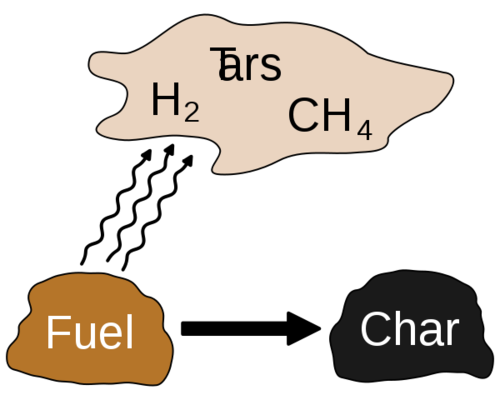Torrefaction: Difference between revisions
Jump to navigation
Jump to search
(Added a Category to the Page) |
(Added some more links under the "External Links" section) |
||
| Line 23: | Line 23: | ||
=External Links= | =External Links= | ||
*[https://en.wikipedia.org/wiki/Torrefaction The Wikipedia Page on Torrefaction] | *[https://en.wikipedia.org/wiki/Torrefaction The Wikipedia Page on Torrefaction] | ||
*[https://csrail.org/torrefied-biomass An Article by " [[The Coalition for Sustainable Rail]] " titled "Torrefied Biomass" ] | |||
[[Category:Biochar]] [[Category:Biofuel]] [[Category: Bio-Petrochemistry]] [[Category:Energy]] | [[Category:Biochar]] [[Category:Biofuel]] [[Category: Bio-Petrochemistry]] [[Category:Energy]] | ||
Revision as of 00:30, 12 April 2022
Basics
- A mild form of Biomass Pyrolysis at temperatures typically between 200 and 320 °C
- Produces mainly Tar , and Charcoal
- Can clog vents etc if not accounted for in design
- If intentionalc the calorific value of biomass can be greatly increased
- Benefits are:
- Higher energy density
- More homogeneous composition
- Hdrophobic behavior
- Elimination of biological activity
- Improved grindability.
- Seems to be via coating the resulting char in the tar via it not being extracted/removed in the flue gas?
Internal Links
- Bio-Tar
- Bio-Asphalt
- Wood Preservation by Carbonization
- Pelletized biomass and Wood Chips
- Kon-Tiki Kiln and Biochar
External Links
- The Wikipedia Page on Torrefaction
- An Article by " The Coalition for Sustainable Rail " titled "Torrefied Biomass"
